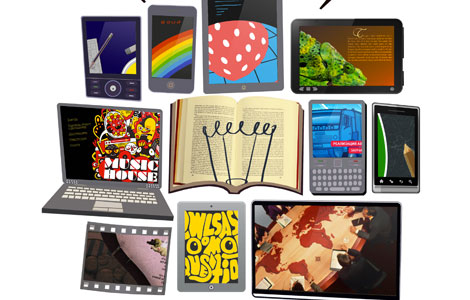No time for words
Updated: 2013-07-14 08:05
By Tom Brady (The New York Times)
|
|||||||||||
The days of communicating via e-mails and text messages may soon become as quaint as a hand-written letter sent via snail mail or as arcane as an actual phone conversation. Forget about the long, drawn-out 140-character Twitter post.
We are approaching the day when it will all be said with pictures, The Times reported.
"Photos are fast becoming an entirely new type of dialogue," Nick Bilton wrote in The Times. "The cutting-edge crowd is learning that communicating with a simple image, be it a picture of what's for dinner or a street sign that slyly indicates to a friend, 'Hey, I'm waiting for you,' is easier than bothering with words."
Family photo albums once sat on shelves, full of images of wedding and graduation celebrations, memorable vacations and awkward poses around the Christmas tree. Now, clicking on a button allows us to post a photo online, saving the bother of using our fingers, or pecking with the thumb, on a keyboard.
"This is a watershed time where we are moving away from photography as a way of recording and storing a past moment," Robin Kelsey, a professor of photography at Harvard University, told The Times, and we are "turning photography into a communication medium."

But the instant gratification of a photo posted to the Web that can get instantaneous approval from your followers has a downside. We need to think, a bit, before we speak and some thought occurs while we type, but there is not always enough time to think before we post.
We are more likely to engage in riskier behavior to get the feedback we crave, as the trove of embarrassing images online of people in various stages of undress or inebriation can attest. Then there is the archive of the criminal (vandalism in national parks in the United States) and the heroic - street protesters in places like Cairo and Istanbul.
"The fact that the world is going to see you increases the risks you are willing to take," Zeynep Tufekci, a professor of sociology at the University of North Carolina, told The Times. "We see this all the time on social media in protests, and the same is true for graffiti. It's performative."
This aspect is useful to yogis with an exhibitionist side. Caitlin Turner, 27, a yoga teacher in Arizona, has more than 40,000 Instagram followers as @GypsetGoddess, who see her striking poses in exotic locales, like the Galapagos Islands and Chiang Mai, Thailand. Laura Kasperzak, 36, sets the timer on her Nikon camera to photograph her yoga sessions every two seconds, where the 245,000 people who follow her on Instagram can gawk at her, The Times reported.
Yogis who want to make their photos more powerful can turn to Robert Sturman, 43, an artist who teaches workshops on yoga photography in California and New York, who said the trick is to take them from as low a vantage point as possible.
"I know how to make yoga pictures look beautiful, and I might as well share it," Mr. Sturman said.
Beautiful images are not the point on Snapchat, where photos disappear automatically a few seconds after they are viewed. It says it is "the fastest way to share a moment with friends," but at the same time offers us immunity from our impetuousness.
Users feel liberated to share the most embarrassing "selfies," The Times reported: cellulite, intentionally crossed eyes, double chins, people throwing up on amusement park rides, outrageous party moments, etc.
Evan Spiegel and Bobby Murphy conceived the application as students at Stanford University as an antidote to the cultivated personas many affect online.
"It felt awful to be on social networks presenting myself as this awesome guy: 'Here I am at the coolest party or on a great vacation,'" said Mr. Spiegel, now 22, "when a lot of time I'm in sweat pants watching a movie. People are hungry for things that are in the moment, authentic, not Photoshopped."
For comments, write to nytweekly@nytimes.com.
(China Daily 07/14/2013 page9)
Today's Top News
27 killed, 77 wounded in attacks across Iraq
French train derailment kills six: media
Former S.A President confident of Mandela
US seeking direct nuke talks with Iran
Soulik batters Taiwan, Fujian coast
Death toll rises to 43 in SW China landslide
Russia: no Snowden asylum plea yet
3rd Chinese girl dies in Asiana crash
Hot Topics
Lunar probe , China growth forecasts, Emission rules get tougher, China seen through 'colored lens', International board,
Editor's Picks

|

|

|

|

|

|





